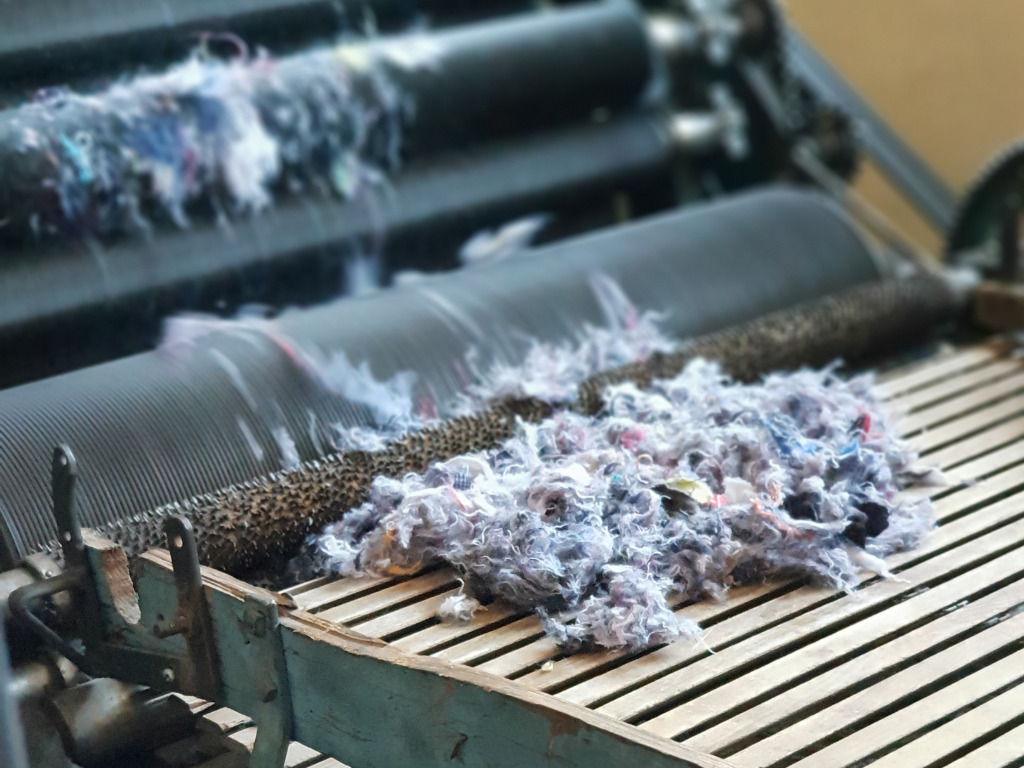4 Mins Read
Home furnishing giant IKEA and clothing begemoth H&M have partnered together on a large-scale test study to help address textile recycling obstacles and are hoping the results will help them make a smooth transition to a circular economy.
IKEA and H&M Group have joined forces in an effort to convert their work into circular businesses and have pledged to only use recycled, renewable, or other sustainably sourced materials by 2030.
In an effort towards this commitment, the industry giants decided to conduct a large-scale study to help them address the obstacles that closing a recycling loop in the textile industry can have as well as help the firms gain knowledge about the chemical content in collected recyclable textiles.
The focus of the first part of the study was cotton, with textile materials divided into three categories: virgin, pre-consumer, and post-consumer with the study diving deeper into pre and post-consumer cotton samples collected from recyclers. Pre-consumer textiles are usually waste that is derived in the production process, making it easier to monitor the chemical content, while post-consumer textiles are those that have already been used by consumers.
In an interview with Chemsec, Project Leader for Recycled Textiles at IKEA, Mirjam Luc said that the challenge of finding fact-based information about recyclable textiles on a large scale requires “industry-wide collaboration”. “We wanted to join forces with others to find innovative solutions, enabling meaningful and scalable changes. As a brand, you can be in much better control if you only use the waste from your own production streams. Challenges might increase when adding industrial production waste with unknown origin.”
The next step was to test these cotton samples using the AFIRM RSL (Apparel and Footwear International Restricted Substances List) test matrix that helps arrive at conclusions and define the probability of detection rate for the chemical substances they are tested for including APEO, azo dyes, formaldehyde, organotins, and PAH in the recycled cotton.
We wanted to join forces with others to find innovative solutions, enabling meaningful and scalable changes. As a brand, you can be in much better control if you only use the waste from your own production streams. Challenges might increase when adding industrial production waste with unknown origin
Mirjam Luc, Project Leader for Recycled Textiles at IKEA
While some substances showed zero traces, others were seen at low levels pointing to a clear difference between pre and post-consumer textiles.
Luc is leading the study with Linn Farhadi, Project Leader for Recycled Textiles at H&M Group, who shared that the companies have worked together on different projects before, so they already have a history of sharing experiences within chemical management. Speaking about the study, Farhadi added: “For the post-consumer cotton, the test results indicated that APEO is the substance group with the highest probability to be detected, while azo dyes and other allergenic and carcinogenic dyes have an almost negligible probability of being detected.”
Additionally, the tests showed that the probability of finding organotins is mildly higher in recycled pre-consumer cotton than its virgin counterpart, while the probability of detecting PAH and formaldehyde is possibly lower in recycled pre-consumer cotton compared to virgin cotton.
The duo mentioned that managing chemicals in virgin materials can be supervised in supply chains through several ways including audits, CoC (Code of Conduct), restricted substance lists, and “positive lists” of chemicals that can be utilized.
“For azo dyes, for example, the results look very promising. We didn’t detect azo dyes in any of the 166 recycled cotton samples. One reason for this might be that azo dyes have been regulated for many years, and that the samples were collected in Europe”, added Farhadi.
The study gives an insight into the potential risks of chemical substances being present in recycled garments, and with the date collected, the companies can devise innovative test staregies that ensure the safety of recycled textiles.
For the post-consumer cotton, the test results indicated that APEO is the substance group with the highest probability to be detected, while azo dyes and other allergenic and carcinogenic dyes have an almost negligible probability of being detected
Linn Farhadi, Project Leader for Recycled Textiles at H&M Group
Going forward, the team will also include testing of wool and polyester and has asked several brands to participate in the study for a wider scope of results. Farhadi concluded: “It would also be great if the results can be used by authorities in their work to align legislation, ensuring that materials are recycled in a safe way and encouraging innovation where needed so that companies can secure safe use of recycled materials.”
The companies believe that collective action is important along with transparency in the supply chain and with partnerships and sharing of knowledge, the industry can work together towards a circular economy.
Recently, the companies came together to support TreeToTextile, a purpose-driven technology development company, that invested EUR€35M (approx. US$42M) for a new plant in Sweden that will boost the scale of sustainable textiles production.
Apart from this partnership, H&M joined Lee for a new denim collection featuring recycled cotton jeans and the fashion giant even partnered with Desserto, using its cactus leather for its new Science Story collection.
Lead image courtesy of IKEA.



